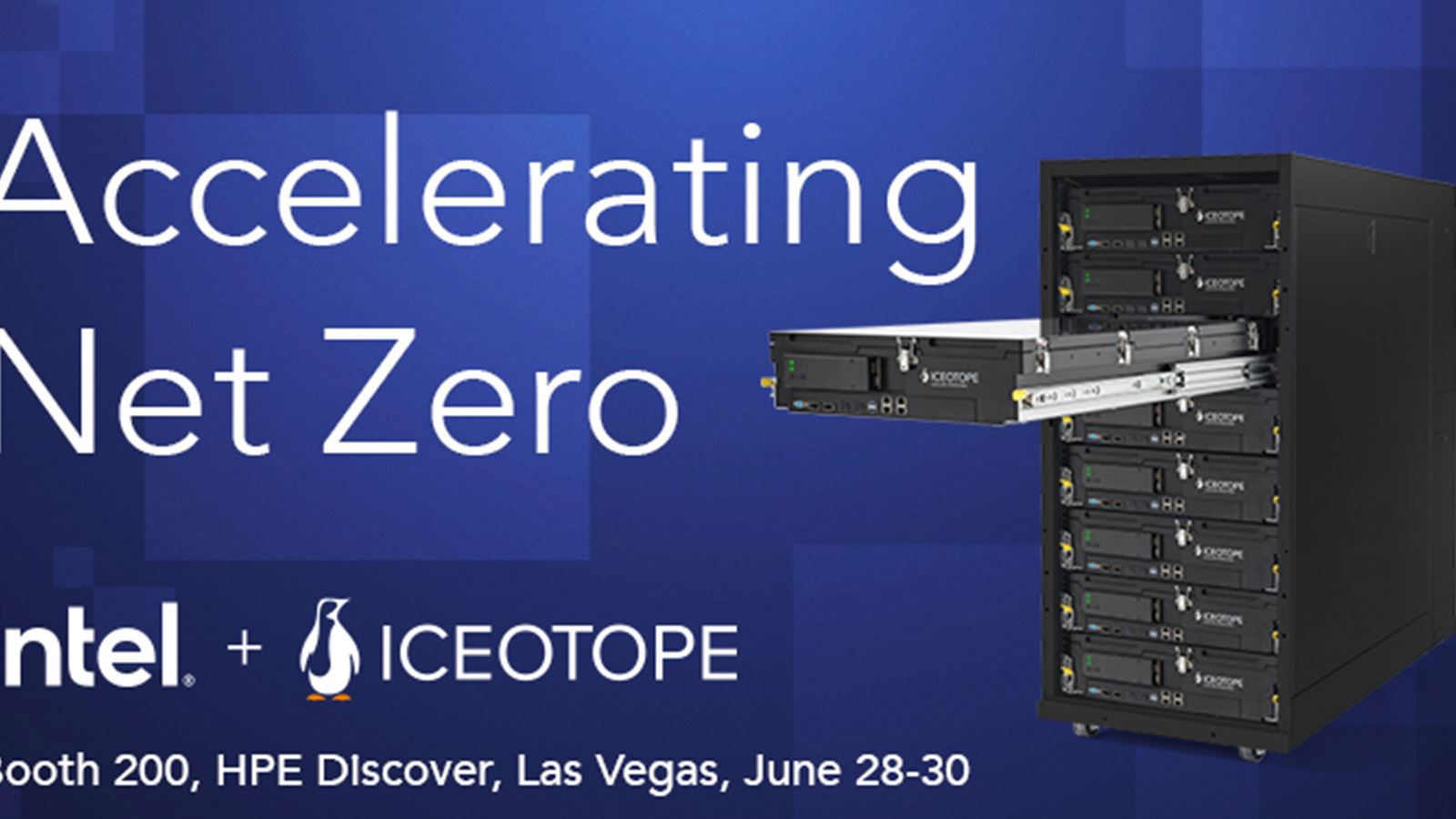
Date published
30 Jun 2022
Author
Iceotope
-
New Ku:l Data Center liquid cooling solution to be demonstrated with Intel at HPE Discover, Las Vegas in June
-
Lab tested system provides massive energy savings, a significant uptick in processing performance and reliable server operations at full throttle
-
Precision Immersion Liquid Cooling Technology ensures predictable cooling in edge and data center use, together with reduced complexity at scale
Iceotope, the global leader in Precision Immersion Cooling, has announced that its chassis-level cooling system is being demonstrated in the Intel Booth at HPE Discover 2022, the prestigious “Edge-to-cloud Conference”. Ku:l Data Center is the product of a close collaboration between Iceotope, Intel and HPE and promises a faster path to net zero operations by reducing edge and data center energy use by nearly a third.
Once the sole preserve of arcane, high performance computing applications, liquid cooling is increasingly seen as essential technology for reliable and efficient operations of any IT load in any location. There is a pressing concern about sustainability impacts as distributed edge computing environments proliferate to meet the demand for data processing nearer the point of use, as well as growing facility power and cooling consumption driven by AI augmentation and hotter chips.
Working together with Intel and HPE, Iceotope benchmarked the power consumption of a sample IT installation being cooled respectively using air and precision immersion liquid cooling. The results show a substantial advantage in favour of liquid cooling, reducing overall power use across IT and cooling infrastructure.
Putting Ku:l Data Center to the test
To understand the operational advantages of Iceotope’s Precision Immersion Cooling system, Ku:l Data Center was compared to a traditional air-cooled system using a 19.6kW load comprising 16x HPE ProLiant DL380 Gen10 servers under stress test conditions.
Laboratory tests, using industry-standard high power computing benchmarks across a range of ambient temperatures, demonstrated that the Iceotope Precision Immersion Cooled system enabled a 4% increase in performance with zero throttling in higher ambient temperatures at server level and consumed 1kW less energy at rack level than its air-cooled counterpart[1]. This represents a 5% energy saving in the IT alone and a 30% saving at scale based on a typical cooling power usage effectiveness (pPUE) of 1.4 in air and 1.04 in liquid cooled data centers.
Iceotope’s Ku:l Data Center solution is being demonstrated at HPE Discover housed in a standard Schneider Electric NetShelter rack with heat rejected to a Schneider heat removal unit (HRU). The integration with HPE ProLiant DL380 servers, as well as provision through channel partners is supplied, supported, and warrantied by IT distribution giant, Avnet Integrated. The three companies announced their partnership to provide liquid cooled data center solutions in 2019.
Air cooling challenges overcome with Ku:l Data Center
Air cooling cannot be used precisely or sustainably to cool high-power chips and processors, and it is commonly held that it is no longer a suitable approach for ensuring an appropriate operating environment for increasingly energy dense IT equipment.
Not only is liquid a significantly more effective medium for heat removal than air, but each liquid-cooled chassis is 100% sealed protecting the critical IT from the surrounding atmosphere – rendering it impervious to dust, gases, and humidity – and creating a stable operating environment. Isolating the IT from the external environment opens a world of potential facility sites and distributed IT locations that could not have been considered until now.
Further benefits accrue from the removal of the server fans and the need for other air handling equipment from the data center space. Energy use is significantly reduced, water consumption is virtually eliminated, and noise becomes a thing of the past.
Unlike air cooled infrastructure, Precision Immersion Cooling does not require rack depopulation at higher densities, enabling the racks to run fully populated to facilitate more servers and storage devices, and/or denser IT loads.
Additionally, Iceotope’s sealed liquid-cooled chassis enclosure simply converts off-the-shelf air-cooled servers to liquid-cooled servers with a few minor modifications including removing the fans. This means that industry standard form factors, including edge and data center racks, can be used to accommodate liquid-cooled IT, with maintenance and hot swapping carried out on site with familiar ease and no mess, without the need for heavy lifting gear or spill kits.
Iceotope Director of Product Strategy, Jason Matteson said, “The processing requirements for ubiquitous AI and high-performance applications across the board are already creating a sustainability dilemma for operators. Accommodating a precipitous increase in chip power at the same time as lowering carbon emissions in distributed edge locations as well as data centers is problematic. Iceotope’s Ku:l Data Center demonstrates a very practical response to an urgent need for a paradigm shift in data center design.”With rising demand for cloud storage solutions, savings of the caliber offered by the new Iceotope Ku:l Data Center solution are becoming more critical to tempering rack densities. According to Uptime Research, the average server rack density increased 15% from 7.3kW to 8.4kW between 2019 and 2020, and anticipated microprocessor introductions are likely to accelerate this trend.
[1] *HPE DL380 Gen10 Linpack Benchmark Analysis, March 2022
